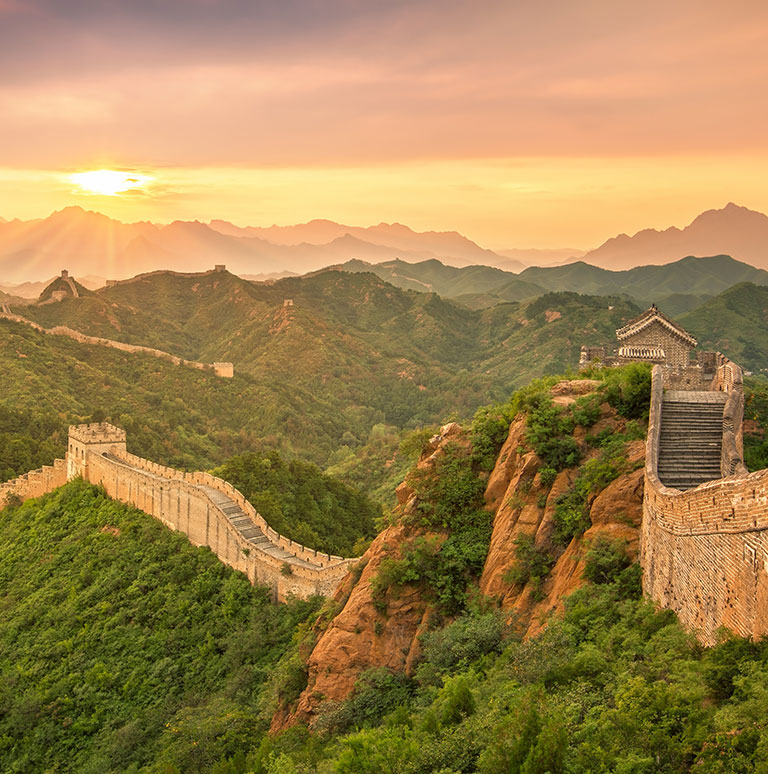


One of the greatest works of construction anywhere in the world, China’s Great Wall is a series of fortifications made from a variety of materials including tamped earth, wood, brick and stone. Sections have been destroyed, rebuilt and improved over many centuries, with the oldest surviving sections more than 2000 years old. For many, it sits squarely at the top of their travel bucket list; for others, it’s just one element of a wider itinerary – whatever the case for you, here’s our handy guide to visiting the Wall.
The “Wall” is a bit of a misnomer as it comprises many separate sections of different ages and construction methods, in varying states of repair. Which section you choose to visit will probably depend on your overall itinerary – a visit to one of the steeply-forested mountainous sections near Beijing is an easy day trip, whereas the more remote sections such as Jiayuguan in arid, desert landscape of Gansu Province is more likely to be part of a Silk Road itinerary.
Of the sections nearest Beijing, it’s a good idea to avoid Badaling which, although one of the most well-restored is also one of the busiest, especially during weekends and public holidays. Sections such as Mutianyu are just as beautiful but far less crowded, and you can decide whether you want to hike to the wall from the valley bottom or save your legs for walking the wall itself by riding the cable car instead.
Another popular section is Simatai, which is a two to three hours’ drive from Beijing, although you may prefer to spend the night locally in order to experience its most unique feature: it’s the only section that’s lit at night so that you can enjoy a magical twilight walk along the wall.
If possible, try to plan your visit for outside of the peak summer months, not just to avoid the peak of the crowds, but also because temperatures can reach into the thirties – not ideal when you’re dealing with all those stairs! On the other hand, it’s not recommended to visit during the winter either, as the temperature can plummet below freezing, with snow and ice making the stony surfaces treacherously slippery. Spring and summer are ideal, but you should still come prepared for all weathers, from hot sun to cold wind.
Although it’s possible to buy refreshments from vendors on and around the Wall, their prices tend to be inflated by the fact that they’re selling to a somewhat captive market. For that reason, it’s a good idea to bring your own supply of drinking water and snacks so that you can find a quiet spot and soak up the incredible views. You’ll also need to wear sensible shoes: preferably hiking shoes or trainers, but certainly, leave the flip flops in your suitcase for another day.
The Great Wall is a magnificent feat (actually many feats) of engineering and construction, thanks in large to the difficult terrain it crosses. Various dynasties across many centuries have contributed to its construction, while both humans and nature have done their best at times to destroy it. The best way to fully appreciate the underlying stories is to join a guided tour. Regardless of how long you’re planning to spend in China, your personal travel manager can help you choose the tour that’s right for you.